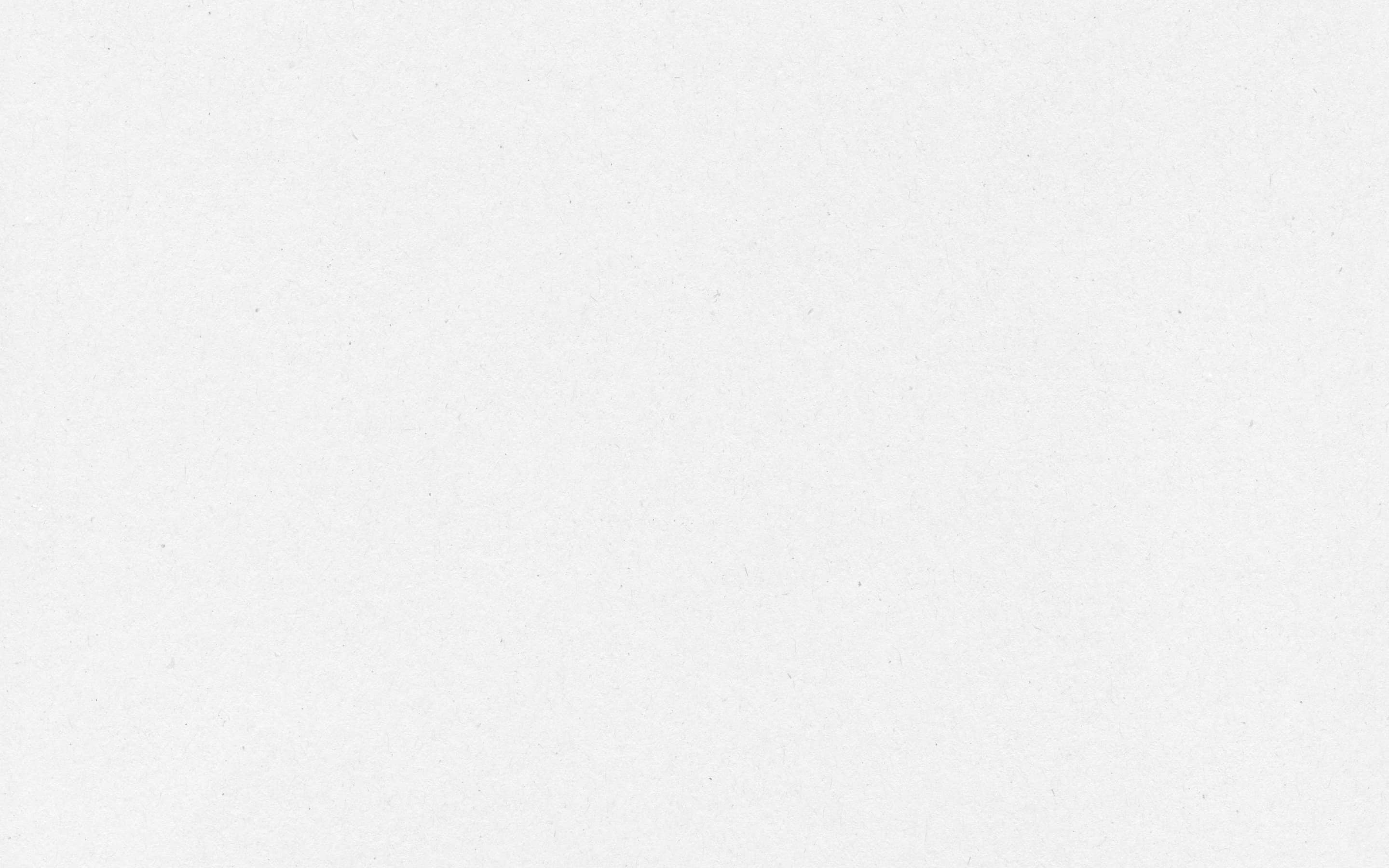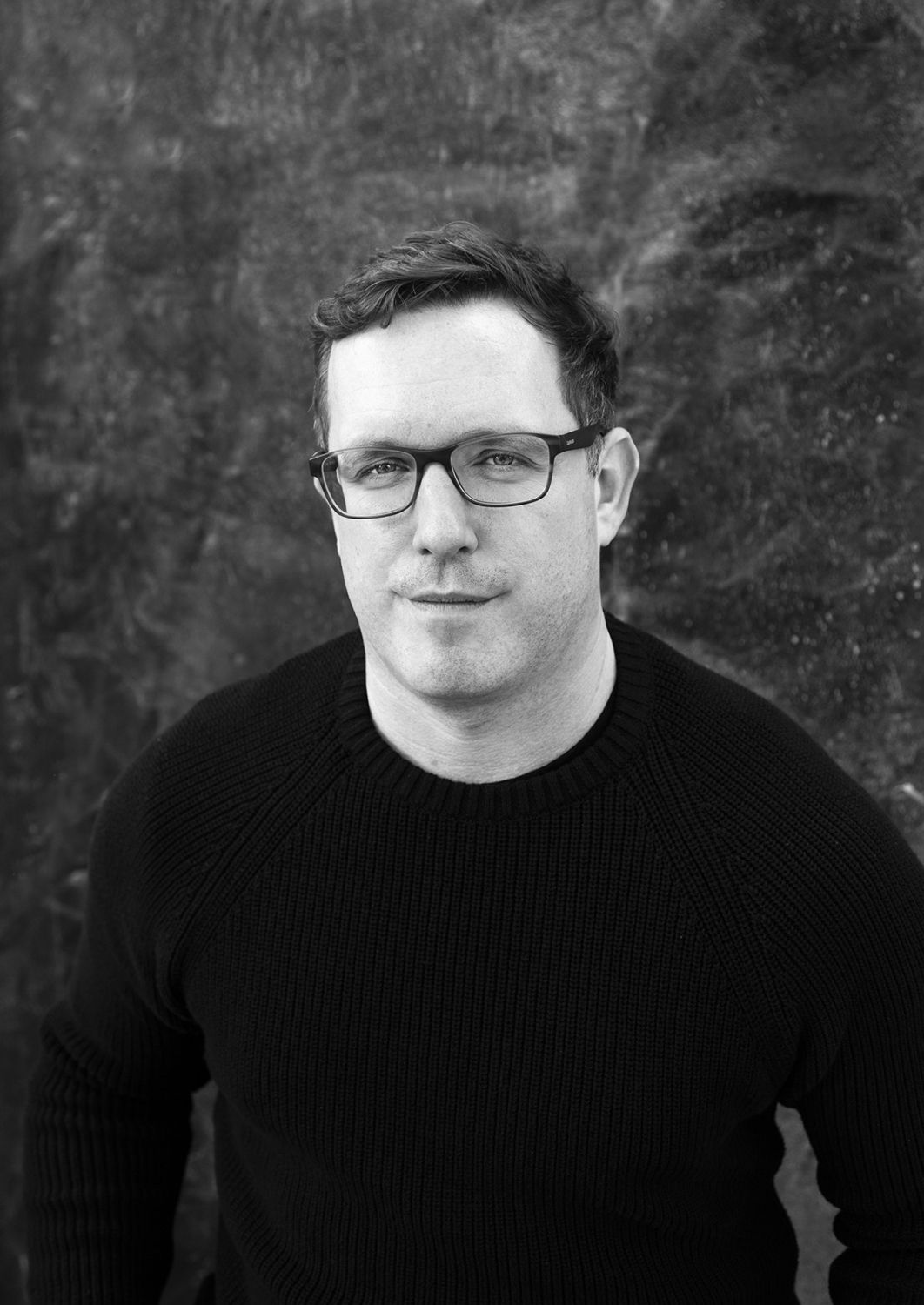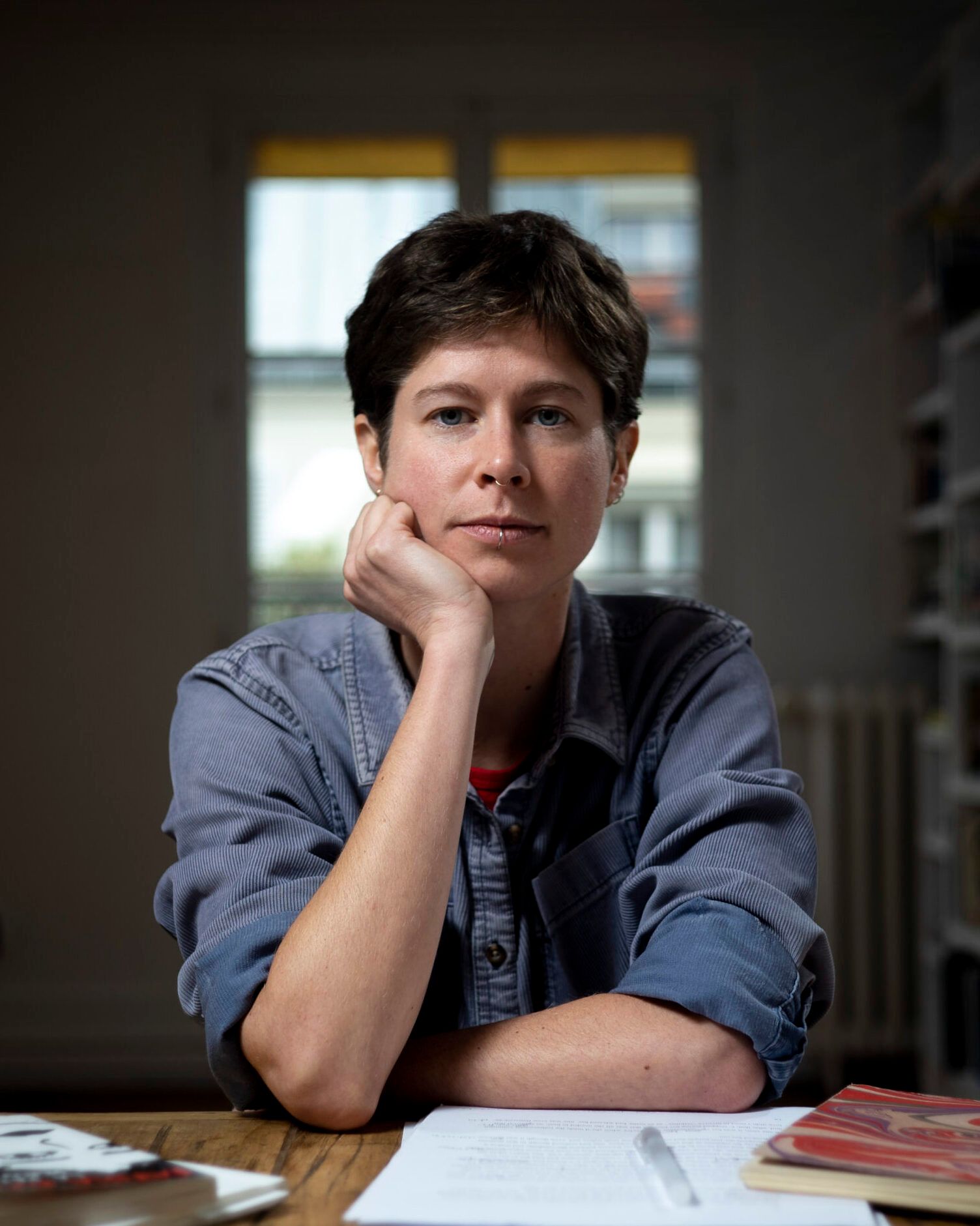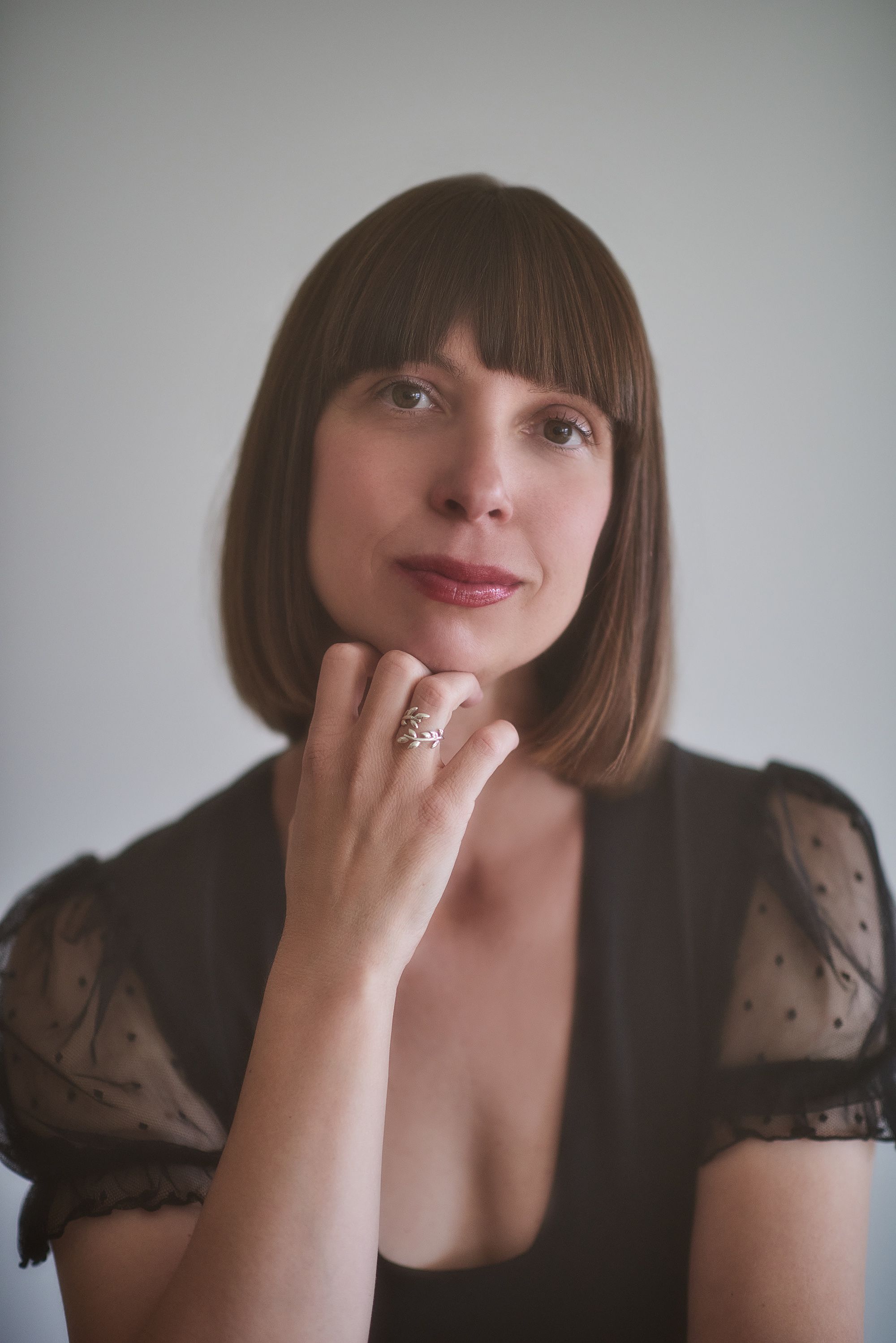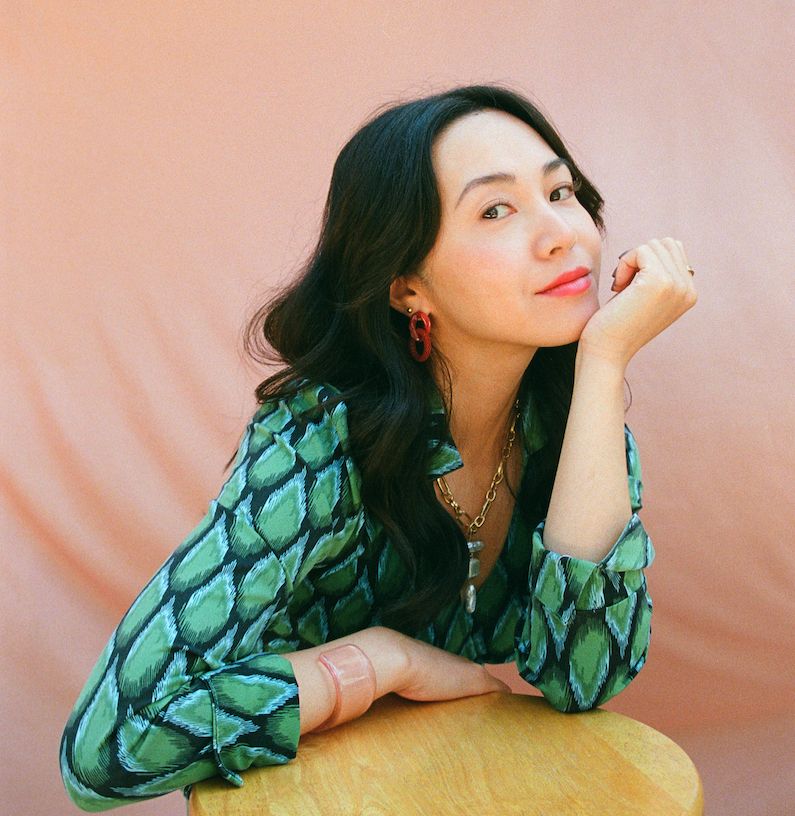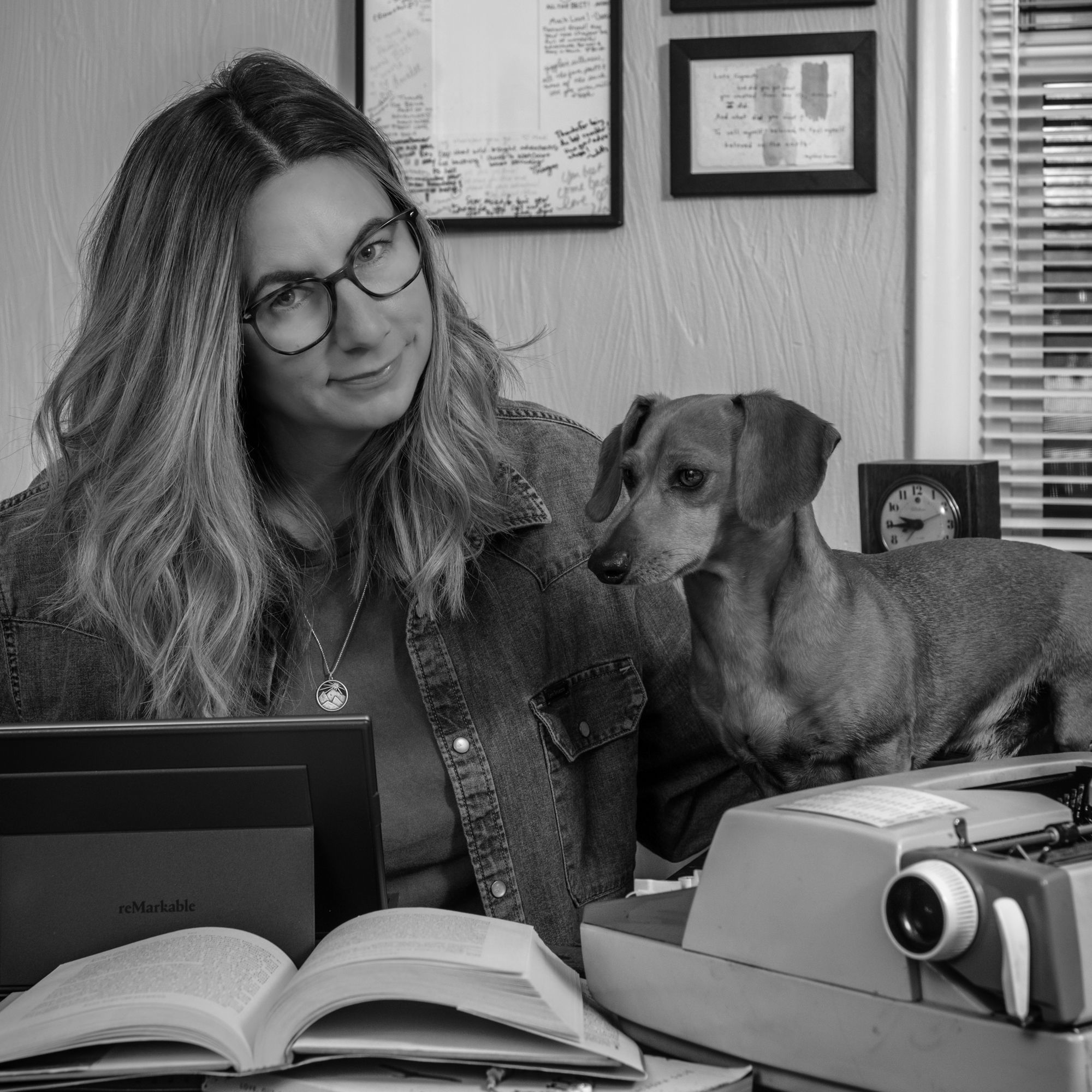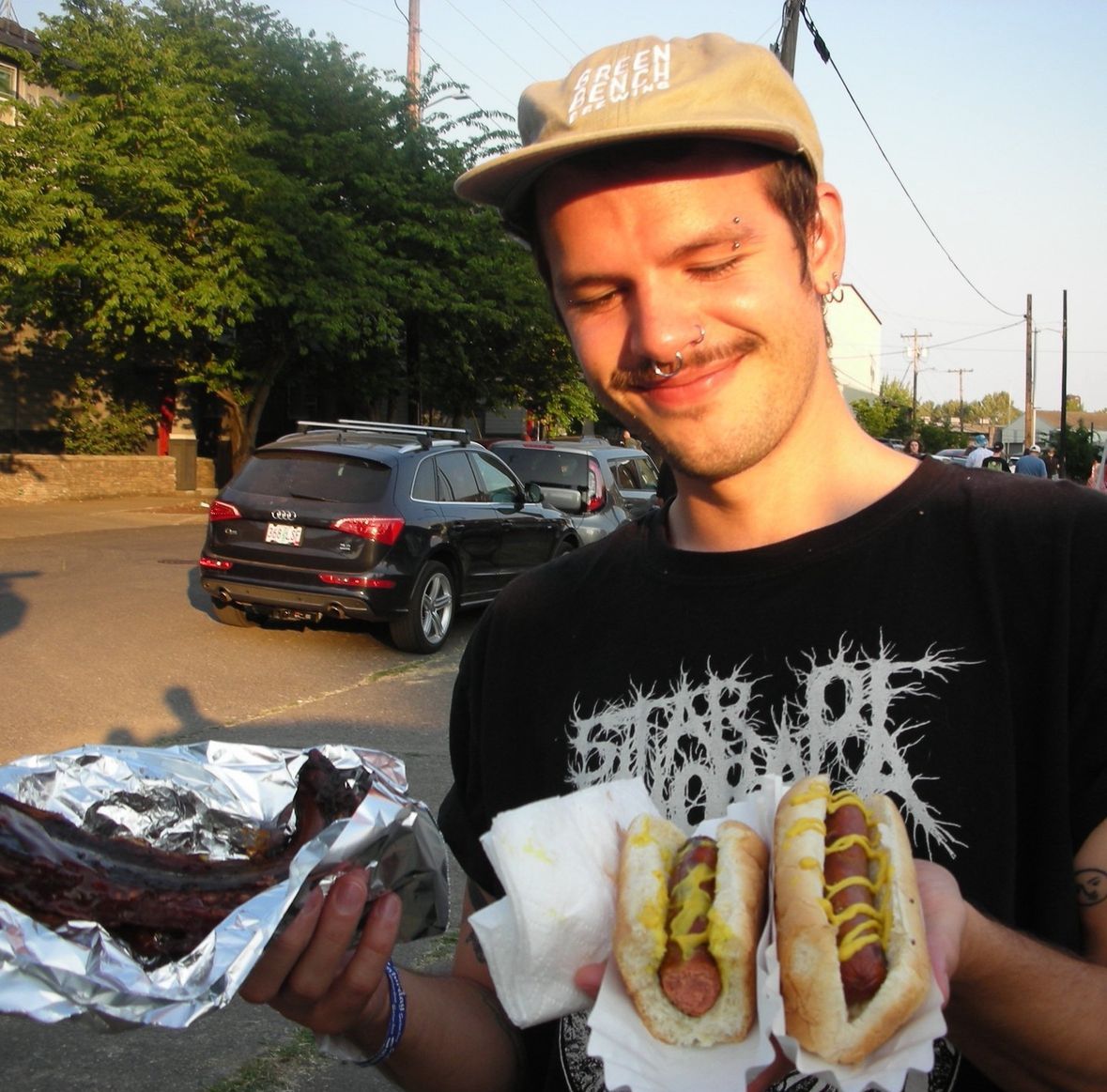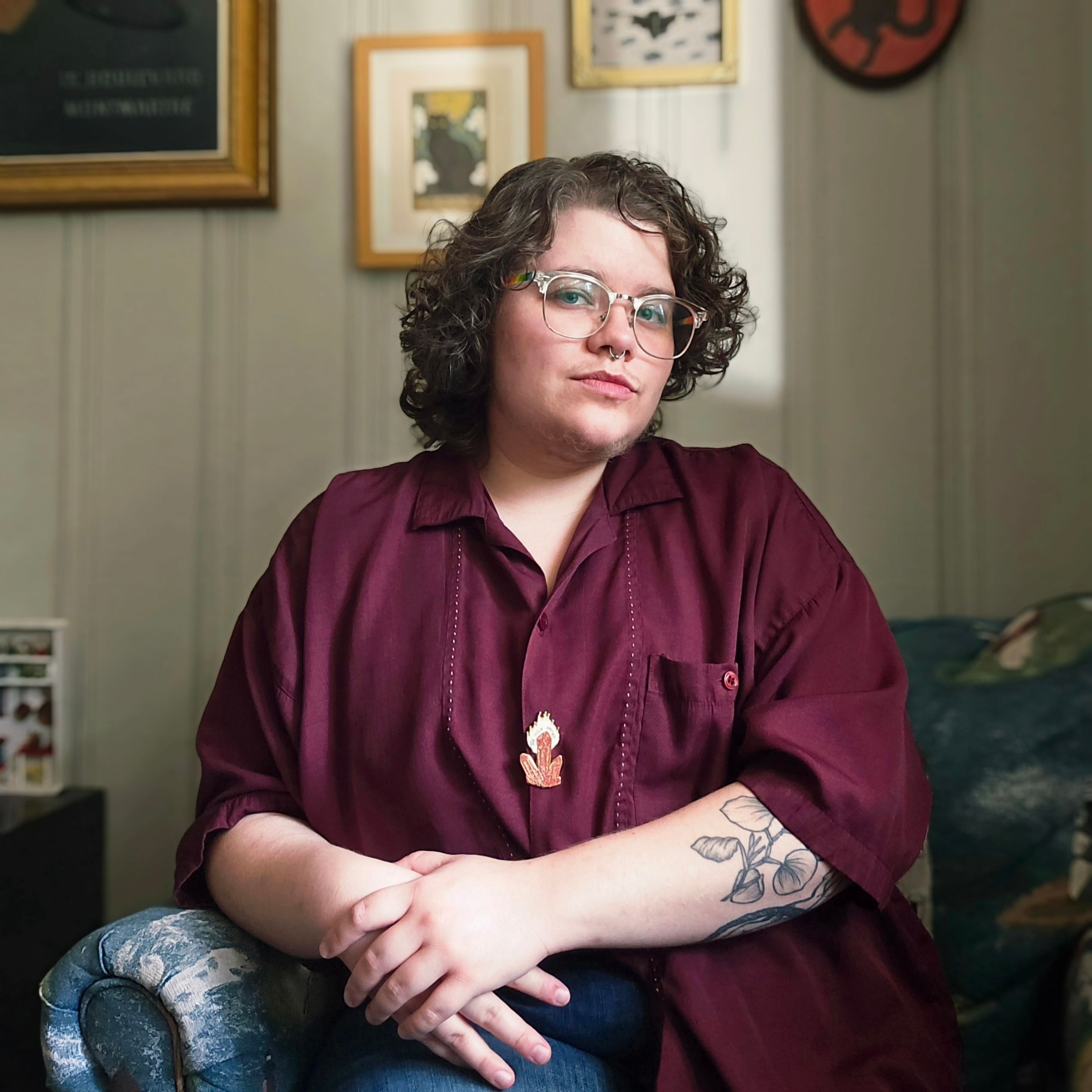Jehanne Dubrow is the author of nine books of poems, including most recently, Wild Kingdom (Louisiana State University Press, 2021), and three books of creative nonfiction, throughsmoke: an essay in notes (New Rivers Press, 2019), Taste: A Book of Small Bites (Columbia University Press, 2022), and Exhibitions: Essays on Art & Atrocity (University of New Mexico Press, 2023).
Jehanne Dubrow and I joke about starting this interview in the style of classically stuffy profiles. Dubrow sips from a frosty glass of Monin rose syrup-infused water, laughing lightly about the Texas heat. But the truth is, Jehanne is one of the most delightfully self-effacing people I have ever met, and her laughter is loud and free as we chat during her evening stroll. Jehanne and I met in 2020 as we both began Vermont College of Fine Arts’s MFA Program in Creative Nonfiction. In my very first workshop, there was something familiar in her face: I would later realize that Jehanne’s beautiful poems are everywhere, and, already holding an MFA in Poetry and a PhD in English, Jehanne was still there to learn, just like me. This is key to Jehanne’s character: for her, the process of learning is never over. She believes that she can always improve, always sharpen her instincts—to Jehanne, there is never a shortage of creative inspiration, and there is always something to aspire to. Jehanne is also incredibly generous about all that she has learned in decades of extensive practice: early on in our friendship, I asked her for general submission feedback, and within an hour, we were on Zoom, face to face for the first time, scrolling through her own submissions. I remember being surprised at her eagerness to help me learn and her candor; her instinct is, forever and unfailingly, to turn around and lift someone else up. Jehanne does not hold herself as an expert on anything, even that which she is highly trained in, because the learning process is the creative process, a space she happily occupies, even when it means transmuting atrocity into words that both heal and sting. This duality and complexion, the idea that things can be both horrifying and beautiful, is at the heart of Exhibitions: Essays on Art and Atrocity.
Self-Contradiction and the Amorality of Beauty Within Atrocity: An Interview with Jehanne Dubrow
Self-Contradiction and the Amorality of Beauty Within Atrocity: An Interview with Jehanne Dubrow

Juliet Way-Henthorne: The form and style of Exhibitions: Essays on Art and Atrocity, both as a series of exhibitions divided into galleries and within each essay itself (snapshots, takes, interwoven with poetry, numbered lists), feel so carefully crafted to enhance the content itself. This successful, deliberate disruption/playfulness with regard to form is very characteristic of your writing—can you speak a bit about this approach to form/style? Visually, is this something that is constructed at a drafting stage, or is it formed later? How does it work within your writing process?
Jehanne Dubrow: I love this question! Early on in the book, in an essay titled “The Red Picture and the Blue,” I write about a Bosnian Muslim painter—Mersad Berber—whose later work explored the genocide in the former Yugoslavia: “Trauma itself is a thing of fragmentation, of disjointed time. It tears at the edges. It needs gluing together. It needs painting over or scraping away. To approach trauma, the artist must engage in an act of translation, moving obliquely, toward a still room where a figure waits, preparing to speak.” Even though I’m speaking about visual art in that passage, I’m also offering an explanation for why the essays in Exhibitions look the way they do. Throughout the book, I’m looking for narrative, rhetorical, and lyrical strategies through which to explore, describe, and represent trauma on the page. And because trauma is so resistant to nonlinear storytelling, Exhibitions became a series of attempts to pin down trauma, to make it stay in place long enough to study it. I think this approach came to over time and through experimentation. Some of the essays (for instance, “Essay, Made of Antique Glass,” which moves between research, personal essay, and poetry) found their forms very quickly. But other essays (“Seventy-Seven Steps” comes to mind) took several years to reveal their final forms to me.
JWH: You confront the idea of place throughout the book. What has it meant to you to explore so much of the world, much of it simultaneously beautiful and frightening, especially prior to your final return to the US at just eighteen? Would you change any of your experiences? When were you happiest during those years, and when were you saddest? How have these experiences shaped you as a person and a writer?
JD: I’m so grateful for my difficult, unusual childhood. I don’t know that I would have become a poet—and, later, an essayist—without these early experiences overseas. So, for example, in Poland, I faced a great deal of antisemitic bullying from classmates, and there’s no question that these contacts with cruelty were formative. Books sustained me during those times. I was also loved and nurtured by Poles like Pani Basia (the housekeeper who took care of me); she taught me Polish, she fed me, she often parented me with great compassion and generosity when my parents were stuck at the Embassy. Poland is the place of my heart, the landscape where many of my ancestors lived (and, in some cases, where they were murdered). It’s a country with a rich cultural tradition. Poets and poetry are revered in Poland. All these contradictions made me.
JWH: This book contains the threads of a love letter to your mother, Jeannette. What was it like to go back and review these stories with her? What did this do for the writing process but also for you and your mother, either separately or together or both?
JD: I think of my mother as the moral center of Exhibitions. She’s such an ethical, strong woman. Whenever I’ve written about my mother–both in poems and in nonfiction–those qualities shine through. Inevitably, she becomes the star of the book, even though she never hogs the spotlight in real life! At this point, my mother is really used to these kinds of conversations (they’re almost like interviews) in which I ask her to go over some moment from the past. When I was writing my fifth poetry collection, The Arranged Marriage, I spent about two years interviewing her for the book. The Arranged Marriage overlaps with a story I tell in Exhibitions: when my mother was about 19, she was held hostage in her apartment by a man who had escaped from what used to be called “an asylum for the criminally insane.” The Arranged Marriage also tells what happened after that trauma. My mother, vulnerable from the violence of that experience, was forced by her father into an arranged marriage in El Salvador. It took her a year to finally leave that marriage and return to the United States.
In any case, you can probably see why mother remains such an irresistible figure in my writing. She has lived so many different lives, all with such grace and resilience.
JWH: You incorporate a high level of carefully chosen and perfectly interwoven supporting material in the text. Do you find that, when writing about atrocity and trauma, this approach helps to establish authority? How do you choose your supporting texts, and what role do they play for you as the writer versus me, the reader?
JD: Thank you for saying that! I’ve dedicated my career to thinking about how we write about atrocity in ways that are both aesthetically compelling and also ethical. When we enter these kinds of subject matters, it’s easy to believe that the emotional weight of the trauma can do all our work for us. Unfortunately, that approach can often lead to writing that says what’s already been said or that falls into cliché. I believe it’s important to do one’s homework when writing about trauma, especially historically rooted traumas. Know the tradition and the conversation you’re entering. Read across genres and scholarly fields. Explore what the writers who came before you have written about this trauma. When I cite my sources, I’m not necessarily trying to establish my authority. But, here’s the thing: National Socialism was a crime that touched every discipline, every field, every part of German life. So, it makes sense that responses to the Shoah should be interdisciplinary too. Also, as you say, I’m trying to find a balance between intellect and emotion, because I believe we need both to circle toward an understanding of the incomprehensible.
JWH: You write about childhood bullying and deep discomfort, but you also include extremely warm and loving figures like Mrs. H and Pani Basia, who feel like little havens throughout. How essential were these figures to both your early life and to your work now as a writer revisiting painful moments, and places, in time?
Similarly, your food descriptions also serve as markers of appreciation for place but also vivid moments that transport the reader. Green olive oils, szarlotka, gefilte fish, Belgian chocolate, Sacher Torte. Food makes place so alive, but it also represents so much, whether that is change, tension, luxury. Can you describe how revisiting these tastes feels?
JD: I loved Mrs. H and Pani Basia so much. And it was much harder for me to write about the joyfulness that they brought into my life than it was for me to recount my classmates’ bullying! I kept worrying that the two women were coming across as one-dimensional. What I felt for both of them was so pure, and that purity of emotion is difficult to render (I didn’t want readers to think I was being sentimental or simplistic). I think what comes through with Mrs. H and Pani Basia is that they were both kind, loving, funny people. And I hope I managed to make them seem three-dimensional and complex by exploring the specifics of their personalities.
I love writing about food, probably because I love thinking about food, not to mention eating! I come from a family where food is an expression of affection, care. My parents are both first-generation Americans and, as is so often the case with immigrant families, food becomes a tether to what has been left behind. Food is memory, cultural inheritance, storytelling. Food is an act of testimony and witness. I’m reminded of what we Jews say about our holidays, that most of them can be boiled down to the idea, They tried to kill us. They failed. Let’s eat.
JWH: “Art is about tension” and Exhibitions is full of tension. How do you keep a balance while writing and revisiting such tension? What do you bring in from your world today to move the process along, and what do you bring in to help pull you out of it at the end of the day?
JD: I’m actually so relieved to hear that you think Exhibitions is full of tension. This was one of my great worries about the book. As a poet, I have a lot of training in the lyrical handling of language, but I lack a fiction writer’s understanding of plot, how to structure a narrative to heighten tension.
For me, the writing process itself is self-care. I find that thinking about craft really protects me from the stress of revisiting a trauma. I’m so preoccupied with the technical challenges of making the essay a powerful aesthetic document that I’m able to maintain some degree of intellectual detachment, even when I’m writing about extremely painful material. As a result, I find that, at the end of the day, I can step away from the work and leave the trauma on the page.
JWH: The complexity and nuance of places in this work helped me to reconcile some painful feelings about my own identity, which has roots in both Burma and England. I have felt guilt in England when in the presence of beautiful things, but your writing, particularly about Brussels, helped me to understand that beauty and appreciation can exist alongside, or even within, atrocity. Do you feel a similar sense of peace or understanding when you put that nuance down on paper, or how does that relationship change as you write? Does it ever become anything akin to closure?
JD: I feel it’s really important to forgive ourselves for appreciating beauty, even when it’s adjacent to horror. And, for me, this forgiveness is a form of closure. Beauty is indifferent to our feelings. It’s amoral. But sometimes it also sustains us. It helps us to keep going. So much of Exhibitions is about finding that balance between recognizing the beautiful and recording the horrors of history.
JWH: The way that you navigate trauma and atrocity resonated in a deeply instructive way—I feel, both in your essays and in this conversation, a sense of permission to explore the ugliness in my world for the first time. While I hope that is motivating for you to hear, I’m curious how you navigate this field as a trauma studies expert. Can you tell me a bit about what I perceive as a great sense of responsibility? How has that informed your upcoming craft book project?
JD: As you know, I’m writing a craft book, The Wounded Line: A Guide to Writing Poems About Trauma. In some ways, I’ve been thinking about this project for twenty years. The book offers a series of best practices, specific craft techniques, writing prompts, and guides for further reading and research. It comes out of my training in Holocaust Studies, Trauma Studies, and War Literature. But it also comes out of my experiences of working with students for nearly twenty years. Particularly over the past decade, I’ve observed that nearly all my students—undergraduate and graduate—want to write narratives of trauma. But most faculty don’t have the training to offer much guidance. Even if the students are taking courses in relevant literary fields, they often can’t figure out how to apply what they’re reading to their own work. My hope is that The Wounded Line will provide practical help and will address a significant need that many poets (both new and experienced) encounter as they’re trying to write about trauma. I think my work on The Wounded Lines speaks to the ways in which I feel responsible: to my students, to the craft of writing, and even to trauma itself.
Juliet Way-Henthorne
Contributor
Juliet Way-Henthorne is a writer/editor based in Santa Barbara, California. She holds an MFA in creative nonfiction from Vermont College of Fine Arts, where she received a Center for Arts and Social Justice Thesis Fellowship to explore biracial Asian-American identity. Juliet is Senior Creative Nonfiction Editor for JMWW, and she works with Hunger Mountain Review and Fourth Genre. Her work has been featured in Hobart and AAWW’s The Margins and is forthcoming from Slant'd and Pine Hills Review.

